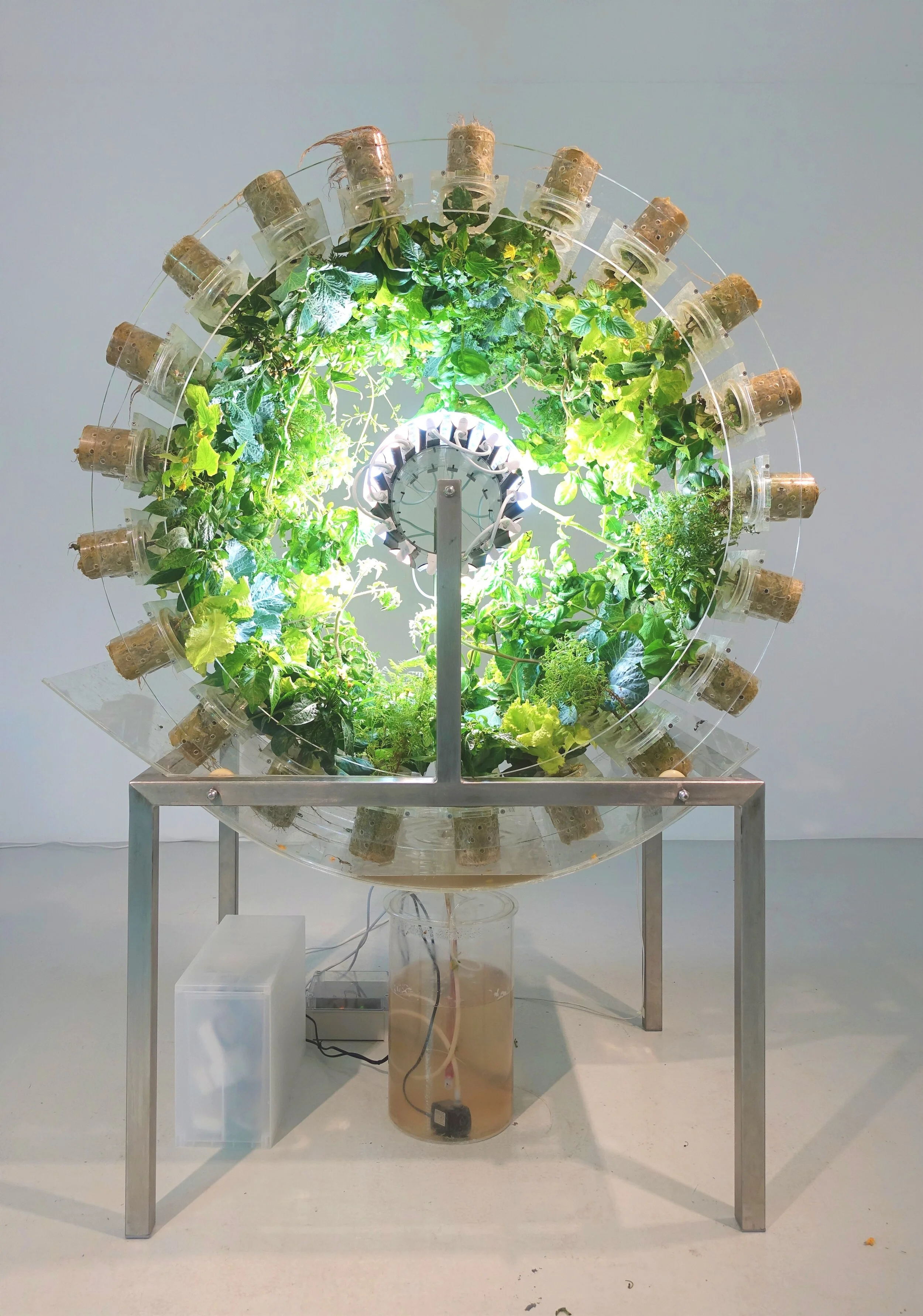Photo credit: Margot Montigny/ Galerie PCP
Photo credit: Galerie PCP
Photo credit: Galerie PCP
Photo credit: Hydar Dewachi/ Vctoria & Albert Museum
Photo credit: Hydar Dewachi/ Vctoria & Albert Museum
Photo credit: Hydar Dewachi/ Vctoria & Albert Museum
plant orbiter
In the 1970s NASA investigated the possibility of growing plant food in extra-terrestrial environments and discovered that plant growth accelerates in anti-gravity conditions. Though since discarded by NASA, this research has been appropriated by marijuana growers to maximise production for indoor cultivation.
Drawing on the NASA research, the installation Plant Orbiter transforms the gallery into a controlled plant growing environment, testing this theory by creating an automated rotating system for food production. Seeds are planted in a propagator and once germinated, the seedlings are transplanted into the slowly rotating wheel, that completes an orbit every hour around lamps mimicking the frequency of sunlight. Built following advice from the marijuana growing community, online forums and hydroponics experts, the work reflects on the viability of the role of technology in local urban food production and speculates on possible future scenarios of food scarcity. Various food crops will be tested to discover their ideal growing conditions.
As the plants develop and populate the machine visitors are invited to pick fruit and vegetables. And yet as with Laessing’s previous works that create processes to be tested throughout the duration of the exhibition, the work is also open to failure; unforeseen malfunctions embody the fragile balance between success and failure; utopian and dystopian outcomes.
The installation forms part of a new series of works by Laessing, titled life-systems and reflects on human responses to the anthropocene by testing out scenarios that attempt to re-imagine our relationship with technology.
Plant Orbiter, 2017, mixed media, 133 x 82 x 185 cm, edition 1/ 3, 1 AP.
Additional elements:
Seed propagator, hydroponic lamp, nutrient preparation table, air circulation fans, audio track Sonic Culture - Rapid Plant growth /Bloom Frequencies, Inventor DeeJay, Youtube, 20:59 mins.
Thanks to Richard Simpson, Rodrigo Arteaga, Anna Jochymek, Growing Life Hydroponics and Adriana Arroyo.
Installation Galerie PCP, Paris, 2017-2018 Camera: Peter Cybulski





